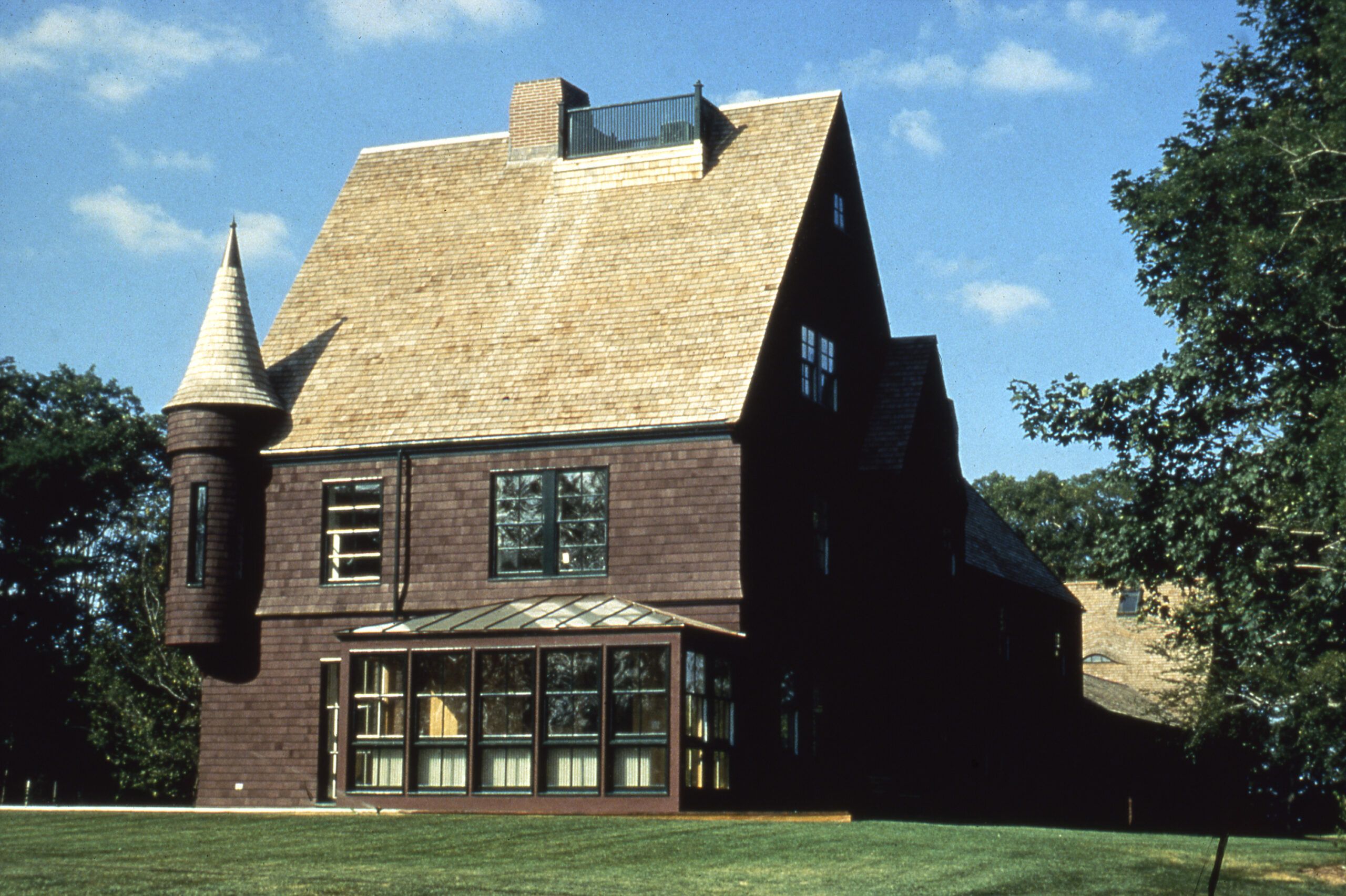In the housing crunch in the early 1980s, single-family homes were snatched up so quickly-and at such prohibitive prices-that developers began to look for alternative forms of housing, transforming triple-deckers, downtown brownstones and even old factories into condominiums. This Old House joined the fray when it stepped in to rescue the long-neglected and often-vandalized Bigelow House, a sprawling historic mansion in Newton, Massachusetts.
Designed by famed Victorian architect Henry Hobson Richardson as a summer house for Dr. Henry Jacobs Bigelow in 1886, the large, rambling Shingle-Style house commands a magnificent view of the surrounding countryside. The property, which fell into disrepair when it was abandoned in 1973, found new life as a set of five condominiums with extensive grounds and a sunny interior courtyard. In addition to the main house, the This Old House crew converted a woodshed, ice house, stable and barns from storage and haylofts into livable condominium units with modern amenities. Details like eyebrow windows, hayloft windows and a cupola remained constant reminders of the historic building’s past, as modern amenities such as central heat, electricity and telephone service arrived at the house for the first time. Because the house was designed for summer use, the crew also added blown-in cellulose and rigid polystyrene insulation, storm windows and energy-efficient heating and cooling systems, including solar collectors and wood stoves.
The house’s 144 windows presented one of the greatest restoration challenges. Richardson designed a great variety of both very large and very small windows. Normally, this effect might be jarring, but he proportioned them carefully to give the mansion an overarching symmetry. However, the windows’ condition was as wildly divergent as their size. The crew salvaged many but still more had to be replaced with carefully matched historical replicas. The addition of interior storm windows that fit together tongue-in-groove-style made the house more energy-efficient without disturbing its historic exterior.
The rest of the house’s facade was carefully re-shingled in white cedar so that the roof and side walls blended into a seamless whole. The Shingle Style celebrates the grandeur of buildings, masking their construction and keeping decoration subtle and restrained. The few evident flourishes, like the main house’s turret, required a bit of innovative thinking. While the original craftsmen would have scored the shingles with small razor cuts called kerfs and bent them around the spire, this tactic wasn’t practical for wider, modern shingles. Instead, the crew soaked the white cedar shingles in water so they could be easily bent around the turret’s circular framework.
With new white cedar shingles replacing the asphalt shingle roof, the exterior of the house regained its original unified look, enhanced by a new landscape plan. Relandscaping included building a new garage for the five units, a guest parking lot and a driveway to accommodate the homestead’s host of new residents, as well as extensive cutting and pruning to rid the surrounding hill of dead trees and brush that encroached during the long period of neglect. Landscape architect Tom Wirth also created a private yard space for the unit owners to enjoy, as well as a brick interior courtyard where residents could mingle and enjoy flowering trees and shrubs. A new deck surrounding the house completed its transformation from a neglected 19th-century dinosaur into livable, modern condominiums that glory in their storied past.

